► First drive of new 2025 Lamborghini Urus SE
► We test new Urus SE plug-in hybrid SUV
► Mid-life facelift here next spring for £208k
The Lamborghini Urus launched in 2018 to the usual chorus of doom-mongers despairing of how sports car brands were sullying their heritage with a muddy SUV. Six years on, it looks like a solid business decision: the company’s total sales have nearly trebled to well over 10,000 units a year with a corresponding leap in revenues, while profits soared to €723 million (£603m) last year.
Still not convinced luxury SUVs are the way forward for Europe’s supercar ancien régime? Perhaps the knowledge that 70% of Urus owners are new to the brand may help sway your opinion – or the fact that 41% of buyers are less than 40 years old. Whichever way you cut it, super-sports SUVs appear to be flavour of the day, with car makers and buyers alike.
Which explains why we’re here in Nardo, deep in the heel of Italy, to test the new 2025 Lamborghini Urus SE – the new plug-in hybrid version of the brand’s go-anywhere sports car. It represents the significant mid-life facelift for the Urus and acts as a form of reset: this is the only Urus now available, as the S and Performante are retired.
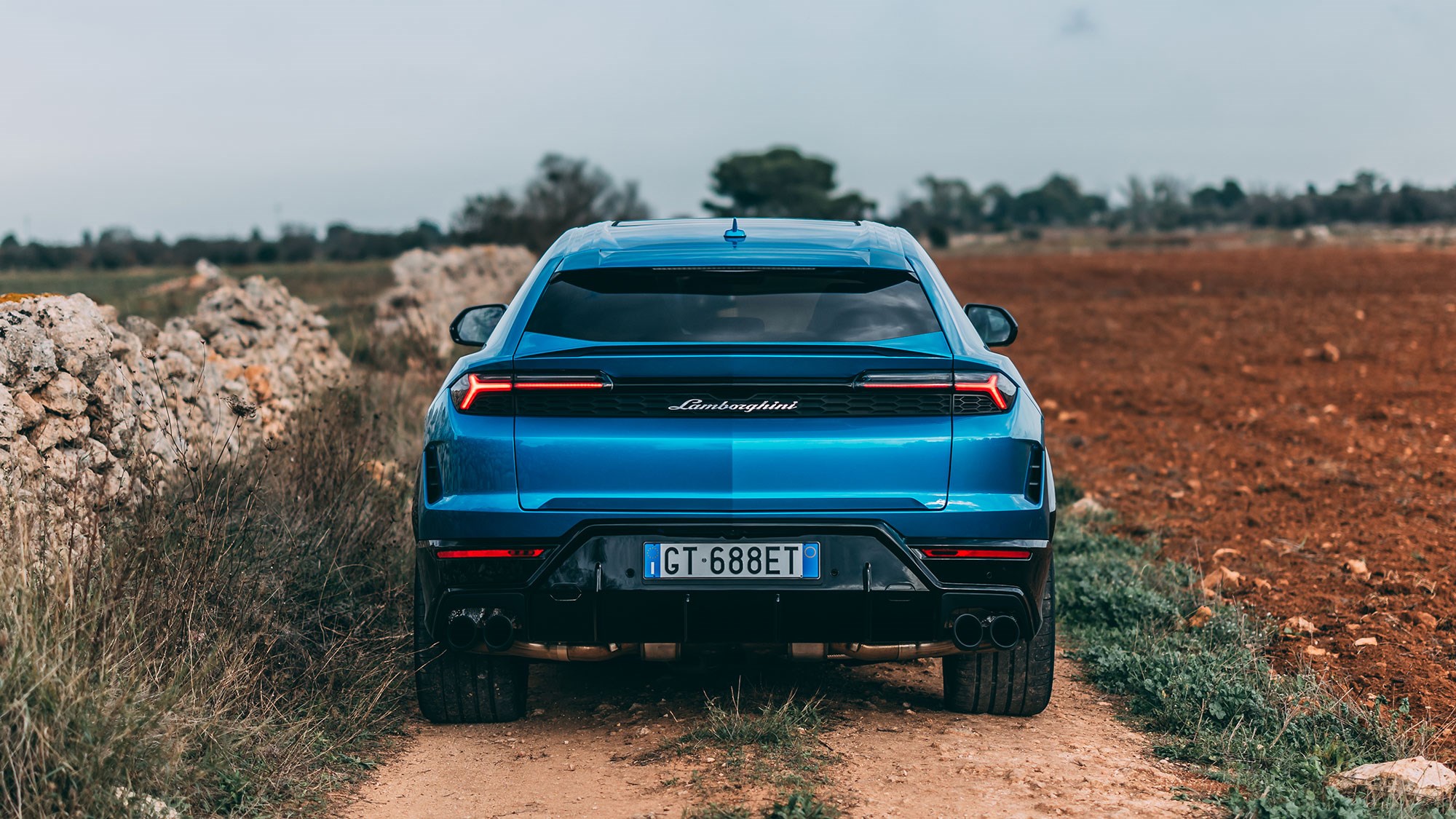
In this review we’ll test whether plugging in has broadened the appeal of the Lamborghini Urus and whether it can hope to assuage your environmental guilt; report on exactly what’s new in the engineering and design departments; and, perhaps most crucially of all, we’ll pass judgment on how it drives and whether it makes sophisticated and fun family transport. Read on for our full verdict.
At a glance
Pros: Outrageous performance; softer looks; extraordinary handling; long electric range
Cons: Still slightly outré; some ergonomic grumbles; pricier than ever
What’s new?
This is not an all-new car. Rather, think of the Lamborghini Urus SE as the major mid-life facelift of Sant’Agata’s super-SUV. So you have a buffing-up of the wardrobe, designed to enhance the elegance of the car and dilute those premiership footballer connotations that’ve blighted the Urus since launch in 2018.
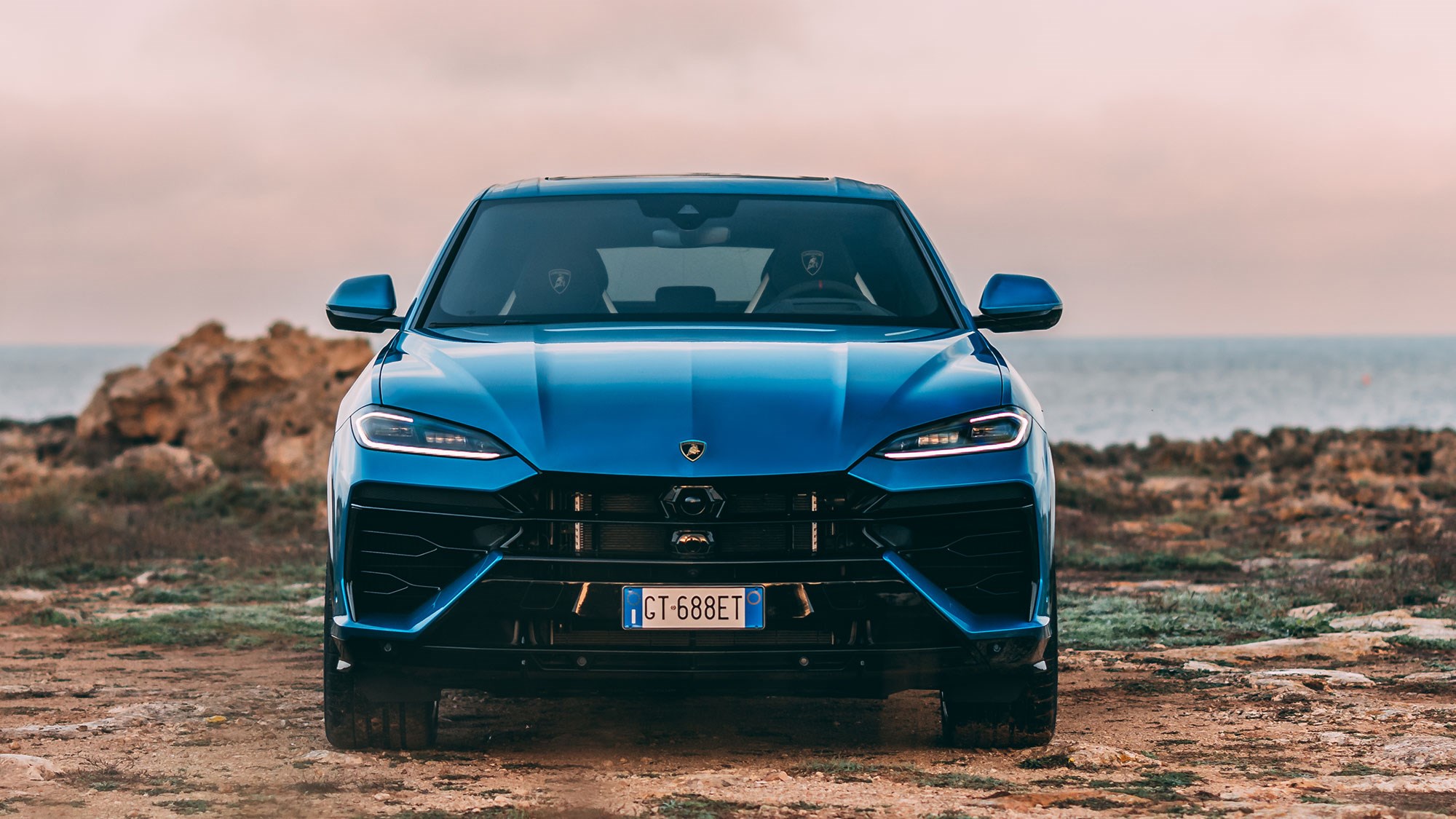
Check out the revised front end: there’s a newly reprofiled bonnet, with a more conventional design and fewer shutlines visible, fresh headlamps graphics and some detailed changes to the cooling apertures needed to chill an 800-horsepower SUV. Overall airflow to the mechanicals has increased by 30%.
The rear refresh is especially successful, with redesigned rear lamps sitting in a patterned horizontal strip of trim, a new ‘centre-peak’ crease to keep the Lambo papercut-sharp lines intact and the repositioning of the rear registration plate lower down in the rear valance.
It looks a little less aggressive from behind; a calmer, marginally more elegant look is welcome.
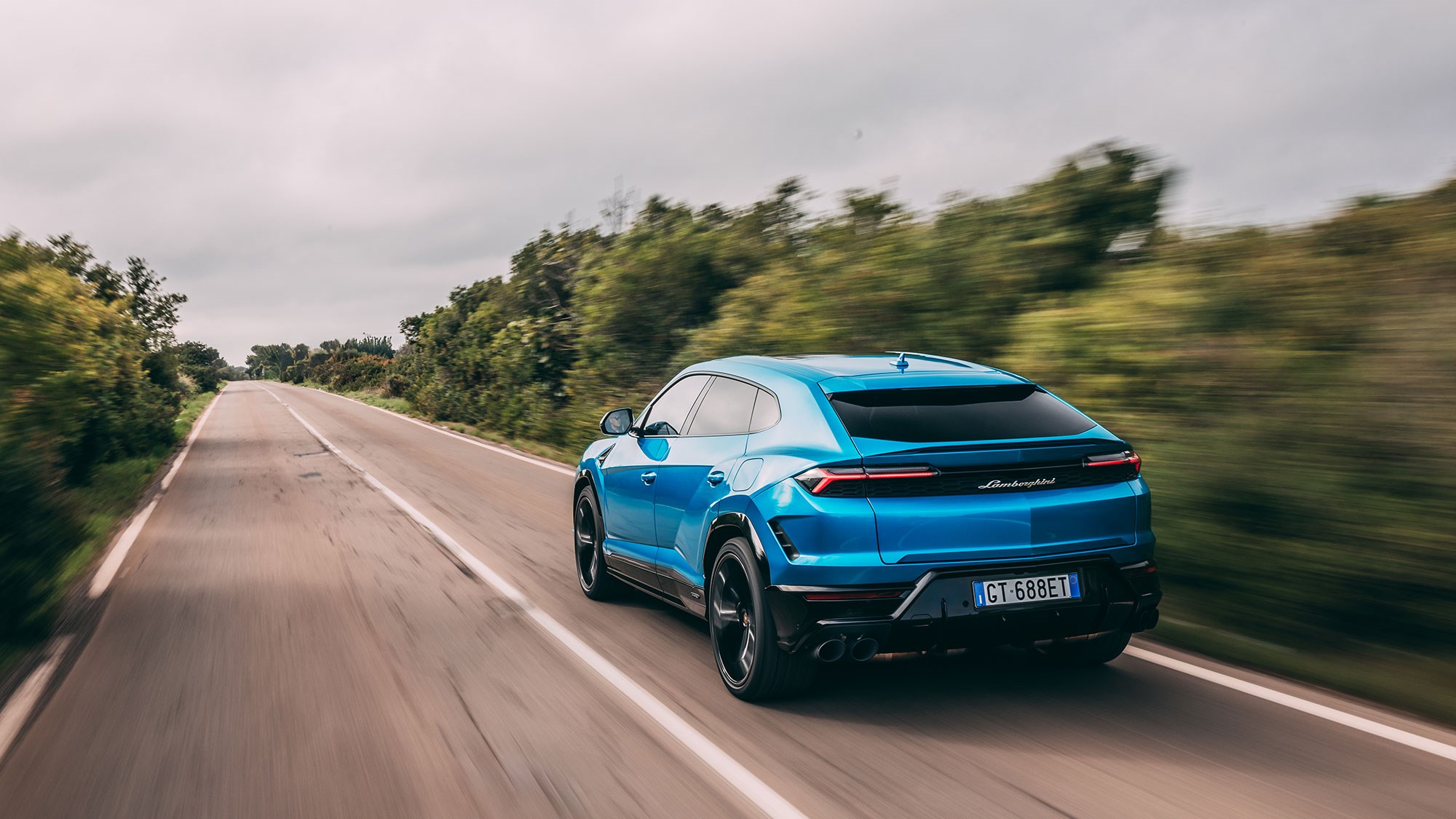
Of more interest are the technical changes you can’t see. Lambo is rapidly electrifying its entire range and the Urus follows in the tyre tracks of the Lamborghini Revuelto and Temerario hybridised sports cars to complete the trio of plug-in Lamborghinis. It’s a remarkable switch at scale to cut the group’s carbon footprint and Sant’Agata should be applauded for moving at such speed.
They’ve done it by adding a hang-on electric rear axle to provide all-wheel drive on the Urus SE, fed by a substantial 25.9kWh lithium-ion battery nestled in the under-floor compartment of the boot. A clever algorithm is used to determine how and when to deploy the e-motor, juggling combustion traction with electric drive depending on the road conditions and which combination of 11 driving modes is selected.
This is a sophisticated full hybrid that has the ability to drive silently with zero exhaust pipe emissions around town – and at speeds of up to 84mph – or to glide in combined petrol-electric mode and indeed turn into a rip-snorting lunatic SUV at the push of a button.
What are the specs?
To understand the character of the Urus SE it’s useful to study the specs in detail. Engineers admit they couldn’t countenance downsizing a Lambo’s engine to a four- or six-cylinder motor – so the beating heart of this plug-in hybrid electric vehicle (PHEV) is very much the group’s familiar 3996cc 90deg V8 twin-turbo petrol (as used by Bentley and others). It’s hardly a shrinking violet, producing a stout 612bhp at 6000rpm and 590lb ft of torque all the way from 2250-4500rpm. This is the entry-level Urus, remember!
A punchy 141kW electric motor at the rear wheels adds the equivalent of 189bhp and 356lb ft when operating solo. Combined, the two powertrains have a system output of an extraordinary 789bhp and 700lb ft (a nice round metric 800hp and 950Nm). It’s a serious bit of kit, alright…
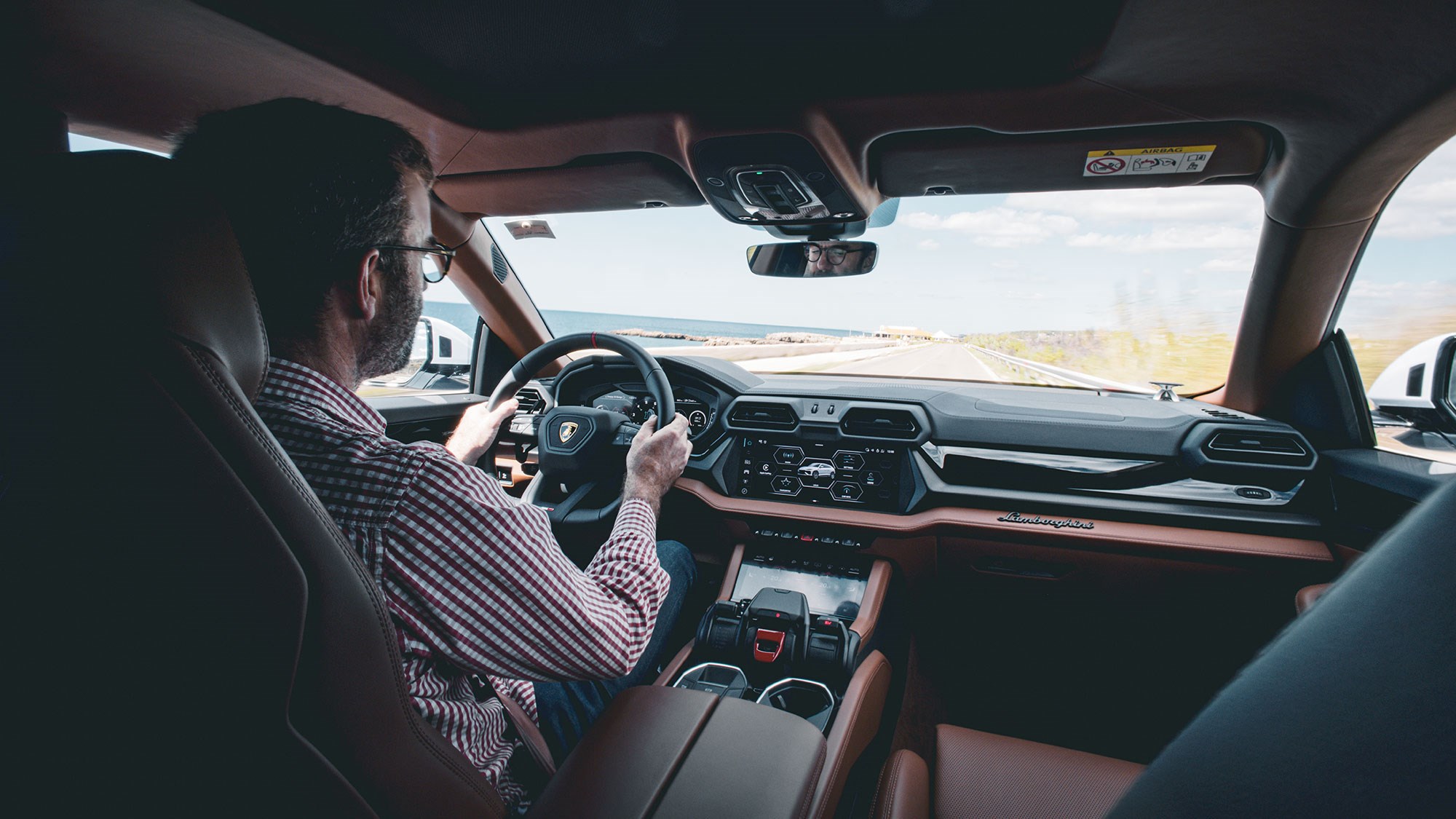
These dizzying outputs explain why this ‘base’ model can scamper from 0-62mph in a stomach-wrenching 3.4 seconds and it’ll spear on to 194mph top speed if you can find a road long and empty enough. It’s hard to believe there will be further, go-faster Urus models in the pipeline to replace the Lamborghini Urus Performante…
What’s it like to drive?
As you can detect from the specs above, the SE is a violently quick car. It’s to the Urus’s credit that I found it way more sophisticated than the raw figures suggest. This is a family car, after all – albeit for parents who don’t want to sacrifice performance and dynamic ability as the penalty for their fecundity.
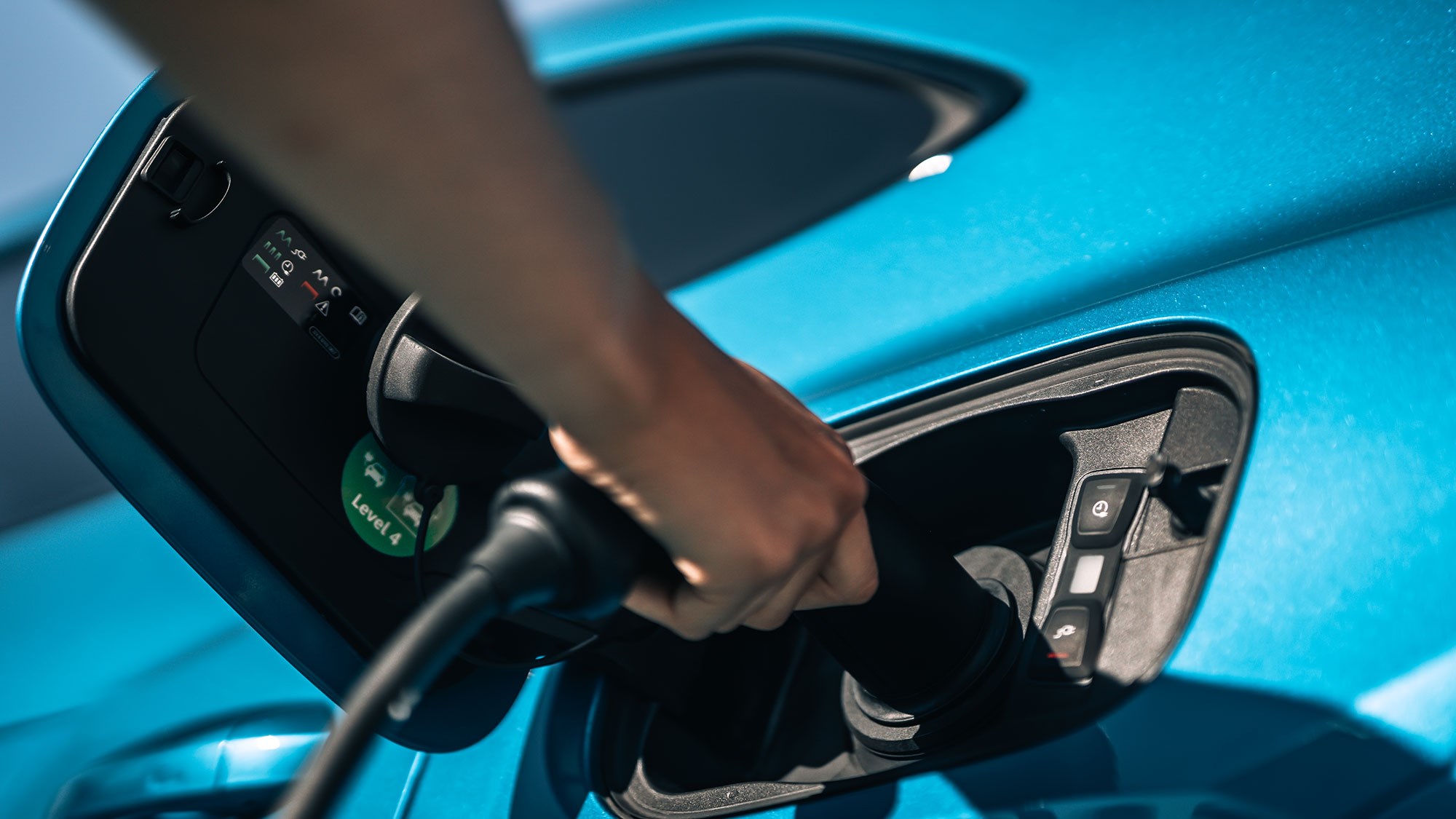
Let’s not forget this is a full PHEV. Even though Lamborghini admits many owners may neglect to plug in, they’d be crazy not to. That capacious 26kWh battery tops up easily overnight meaning you should be able to start every journey with a 37-mile electric range to pootle around town or cross-country in saintly silence. It stills feel unusual to drive a Lamborghini thus, especially on a motorway, but it really works and provides a suitably softer, more relaxing ambience compared to the histrionics of yore.
Flick the controller on the centre console to choose your motive power: EV mode to engage electric drive, Hybrid, Performance or Recharge (useful if you’re driving on a low state of charge and want to top up so you can glide silently around town later on).
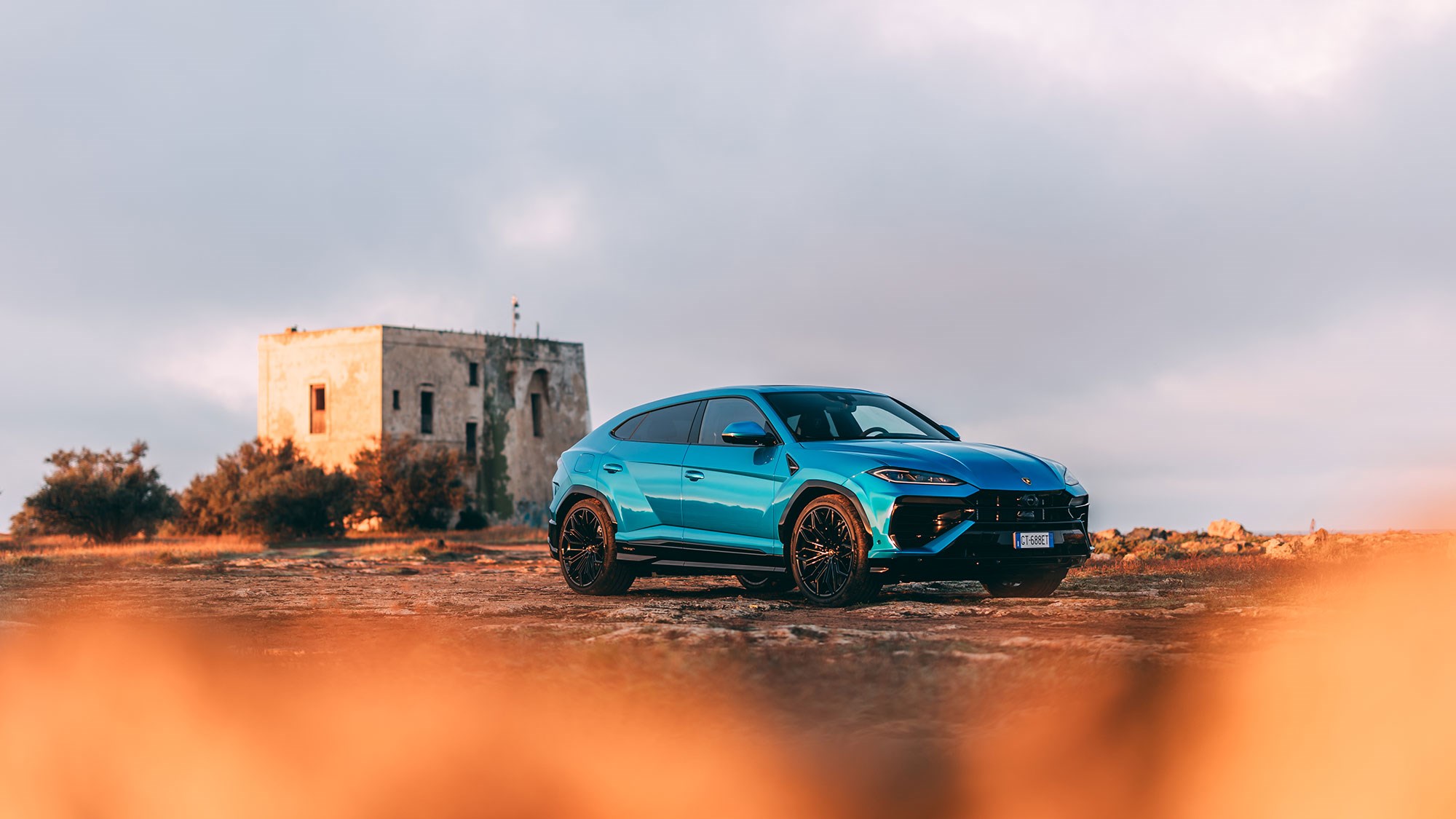
We suspect that if you buy a Lamborghini Urus SE, you’ll want some snap, crackle and pop to be on offer, too – and the SE’s party trick is how it turns from hushed eco-SUV (of sorts) into a raging hotrod at the flick of a few switches. That V8 is a smooth operator. You can hear it kick in on a motorway, but it’s when you head off onto a country lane or race track where it really comes to life.
The 32-valve 90deg lump sounds surprisingly angry if you flick the Anima controller into Sport, opening baffles in the exhaust backbox to let it breathe more freely. Lambo’s heritage is evident in this burbling soundtrack, an angry bark very much in evidence when driven in anger. Experienced thus, the Urus SE offers mind-blowing acceleration and braking from the standard carbon ceramic brakes (a whopping 440mm in diameter up front, 410mm at the rear).
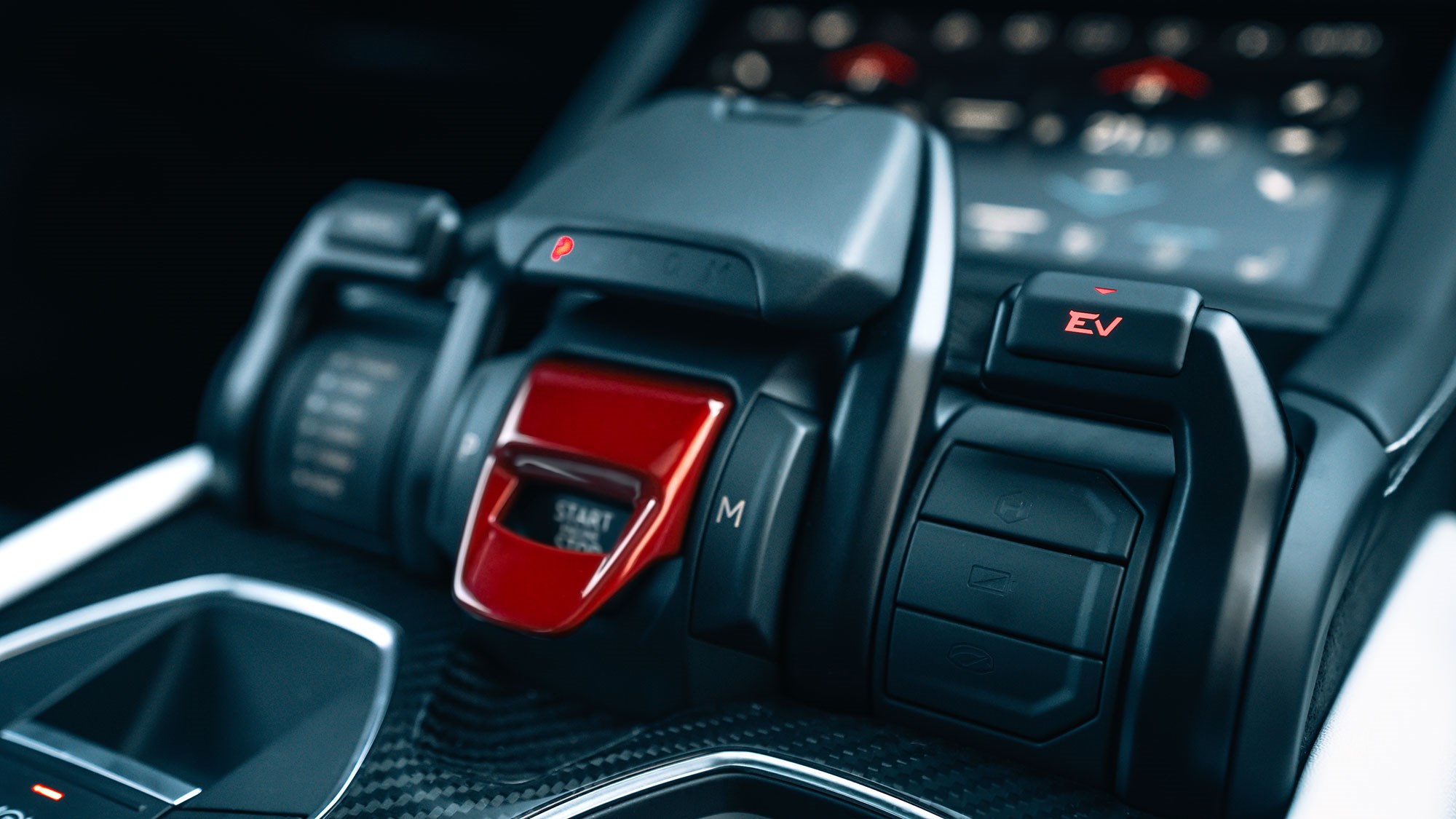
It’s a big car, stretching beyond 5m in length and it feels its size on the road, but the four-wheel steer and active anti-roll bars do a remarkable job of keeping the hulk in check. I never quite lost the sense of its 2.5-tonne kerbweight, but the torque management of the 4wd system is impressive, as a central Haldex clutch and electronically controlled rear differential mete out the power front to rear, left-to-right for optimum traction and response.
We drove on road, track and an off-road rally course and the Urus is an absolute hoot to drive fast and furiously. Flick into Sport mode to apportion more drive rearwards, disengage stability control and it’ll hoon like an oversteer hero with ease – until the grippy Pirelli P Zero tyres eventually succumb to the laws of physics.
What’s it like inside?
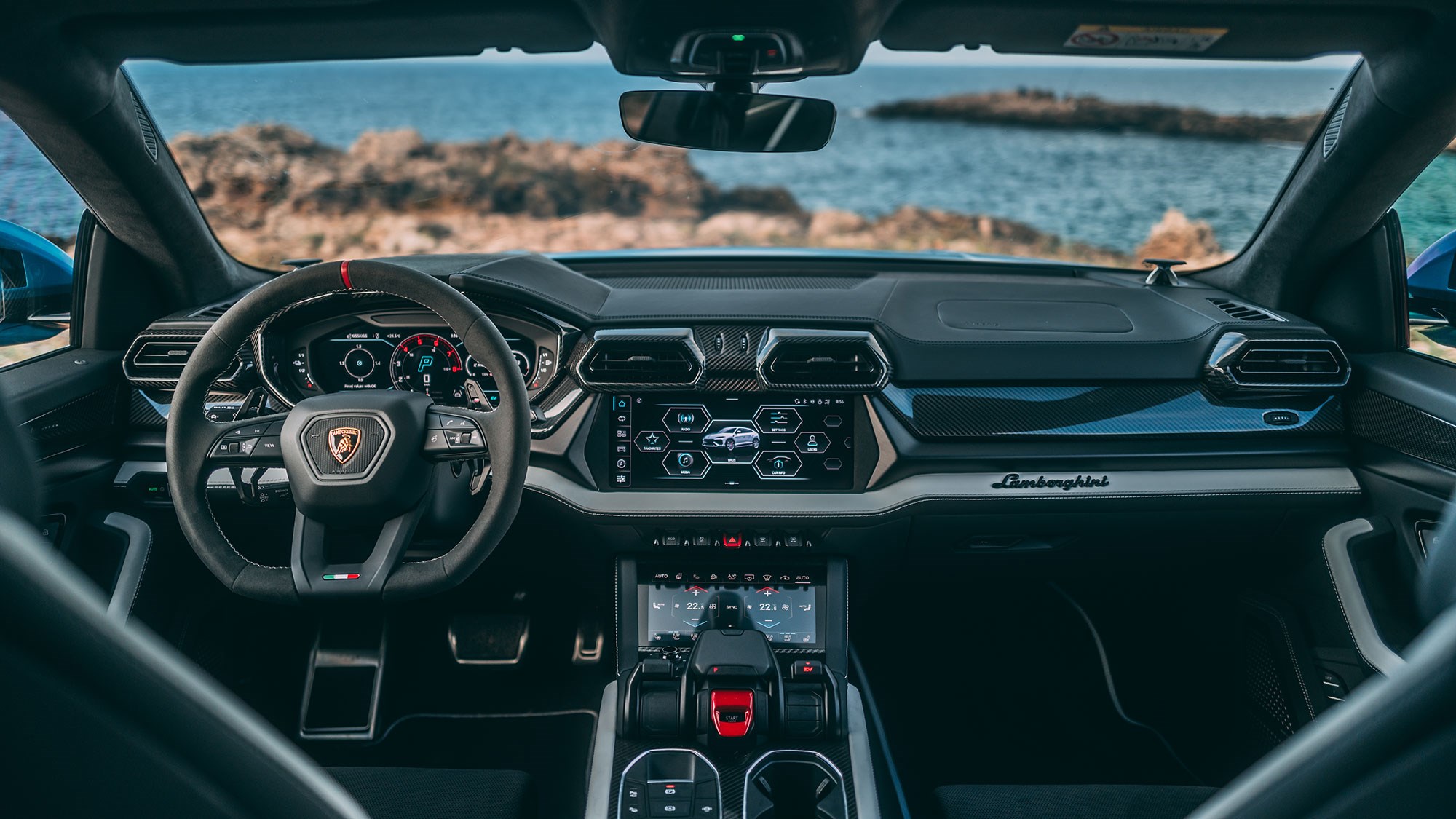
The Urus is the most practical everyday Lamborghini ever made and it shows inside. There is plenty of space for four adults, with an occasional fifth seat that’ll be fine for kids or short journeys. Those extended dimensions make it roomy and comfortable inside – despite the plunging roofline I could get comfortable in either row and I’m 6ft 3in.
You do lose a bit of boot space owing to the large battery pack gobbling up the underfloor compartment – but the main luggage compartment volume is unchanged from the previous car’s at 616 litres. The boot floor doesn’t lift any more and the toolkit and tyre puncture repair spray are located under the back seats in case of emergency.
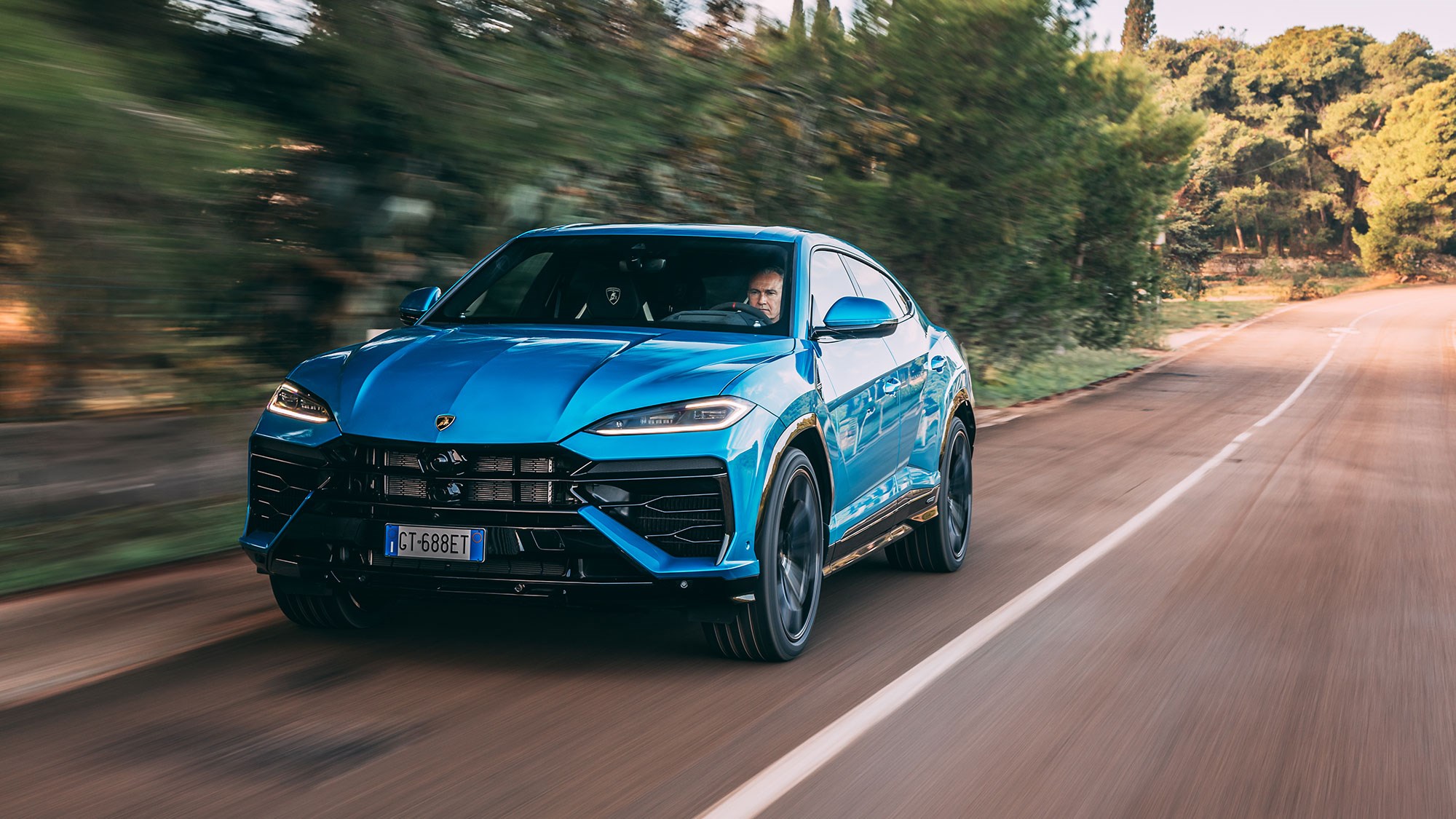
Anyone who’s driven a modern Lamborghini will feel at home here. The design team deliberately shares the same instrument design and typefaces for a family look that means owners can flip between different Lambos with ease. It’s kinda how these wealthiest customers roll. The cabin controls are pretty intuitive, although we should report that we found the typeface and insistence on using hexagonal motifs throughout the infotainment UX slightly maddening.
It’s well equipped as standard (as it should be considering the price has ballooned to £208,000… it used to cost £165k at launch six years ago), coming with a larger 12.3-inch touchscreen, reversing cameras and electric everything as standard and, this being a modern Lamborghini, there is a staggering array of personalisation available in the Ad Personam tailoring service. The company claims an incredible 107 paint choices available – seven of them as standard, the rest costing as much as £40,000 for the most special hues.
I found the seats comfy and there’s ample seat and wheel adjustment for almost any shape of driver to find their perfect driving position.
Verdict
We have to applaud Lamborghini for committing to electrify its range so quickly. This is perhaps the brashest, baddest car brand on the planet, but the combination of the Urus’s softer, more elegant design as part of this mid-life facelift and the arrival of long-distance electric range with PHEV tech has removed the sting out of ownership. It seems they are moving with the times and the claimed 80% drop in carbon emissions is impressive.
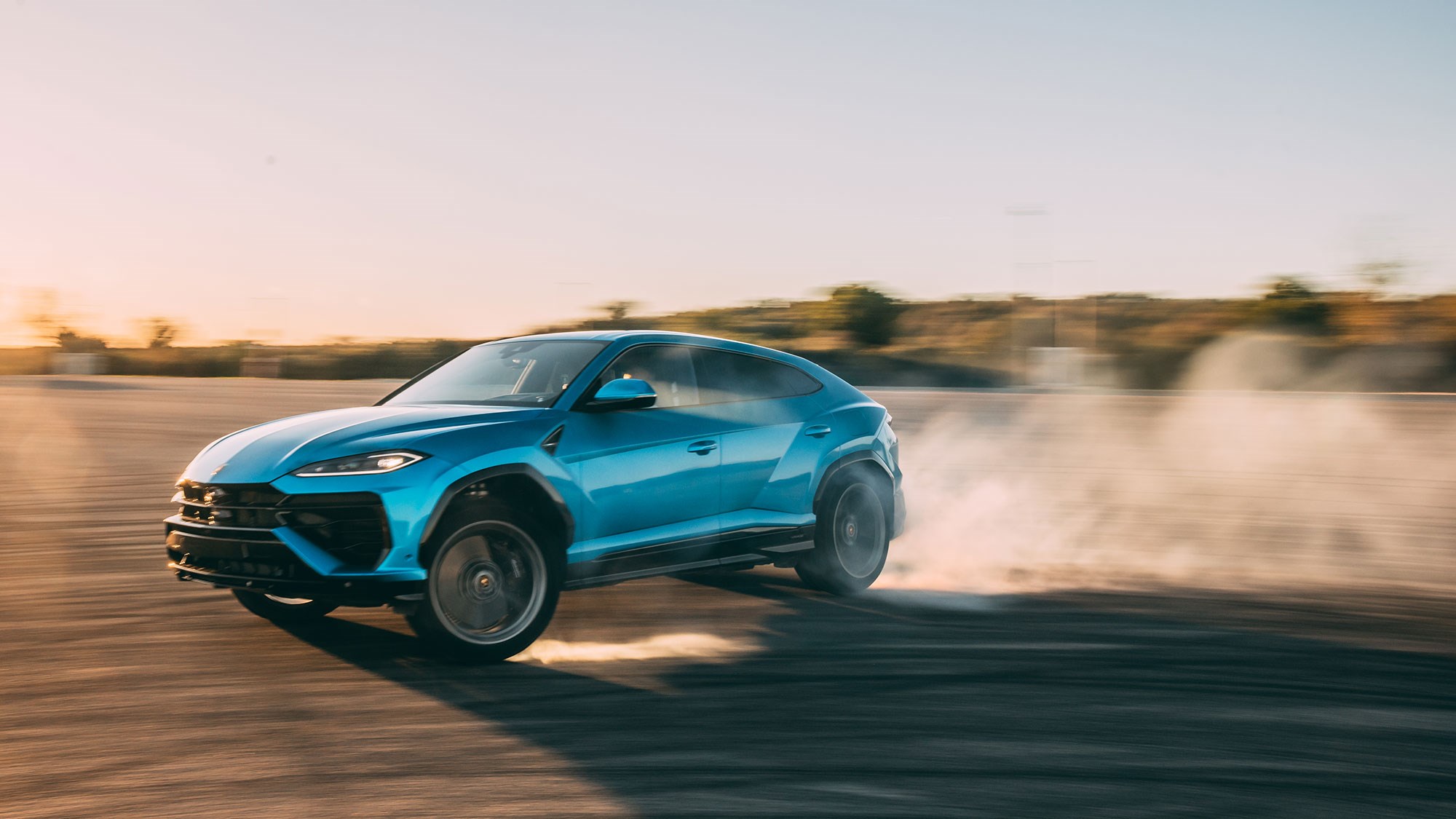
We averaged 26mpg during our day with the car and I suppose that’s not too bad for an 800 horsepower super-SUV (though that did drop to 10mpg when being ragged around a rally course). Charge up the Lamborghini Urus SE daily as its maker intended and you really do have a Jekyll-and-Hyde SUV that can do it all.
It feels to me like Lamborghini is managing its transition to EVs sensibly. It knows customers want fun and theatrics – and the SE can deliver those in spades. But 2025’s makeover has softened the blunter aspects of Urus ownership. It’s now more like an iron fist in a velvet glove: a well judged stepping stone towards 2030’s Lamborghini Lanzardor full battery electric vehicle (BEV), as the brand takes a stepping stone approach to plugging in. Bravo, Lambo!